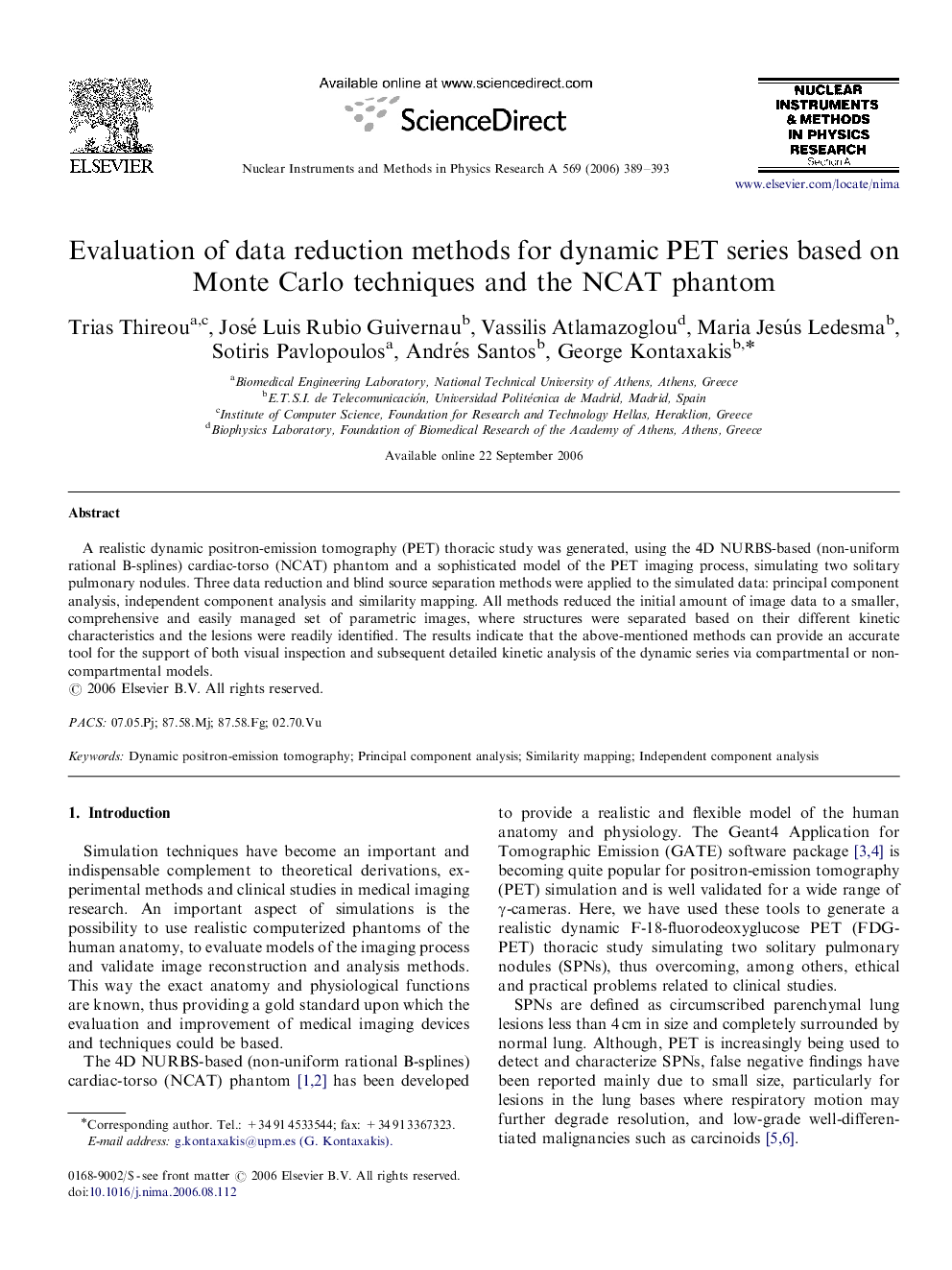| Article ID | Journal | Published Year | Pages | File Type |
|---|---|---|---|---|
| 1832341 | Nuclear Instruments and Methods in Physics Research Section A: Accelerators, Spectrometers, Detectors and Associated Equipment | 2006 | 5 Pages |
A realistic dynamic positron-emission tomography (PET) thoracic study was generated, using the 4D NURBS-based (non-uniform rational B-splines) cardiac-torso (NCAT) phantom and a sophisticated model of the PET imaging process, simulating two solitary pulmonary nodules. Three data reduction and blind source separation methods were applied to the simulated data: principal component analysis, independent component analysis and similarity mapping. All methods reduced the initial amount of image data to a smaller, comprehensive and easily managed set of parametric images, where structures were separated based on their different kinetic characteristics and the lesions were readily identified. The results indicate that the above-mentioned methods can provide an accurate tool for the support of both visual inspection and subsequent detailed kinetic analysis of the dynamic series via compartmental or non-compartmental models.
